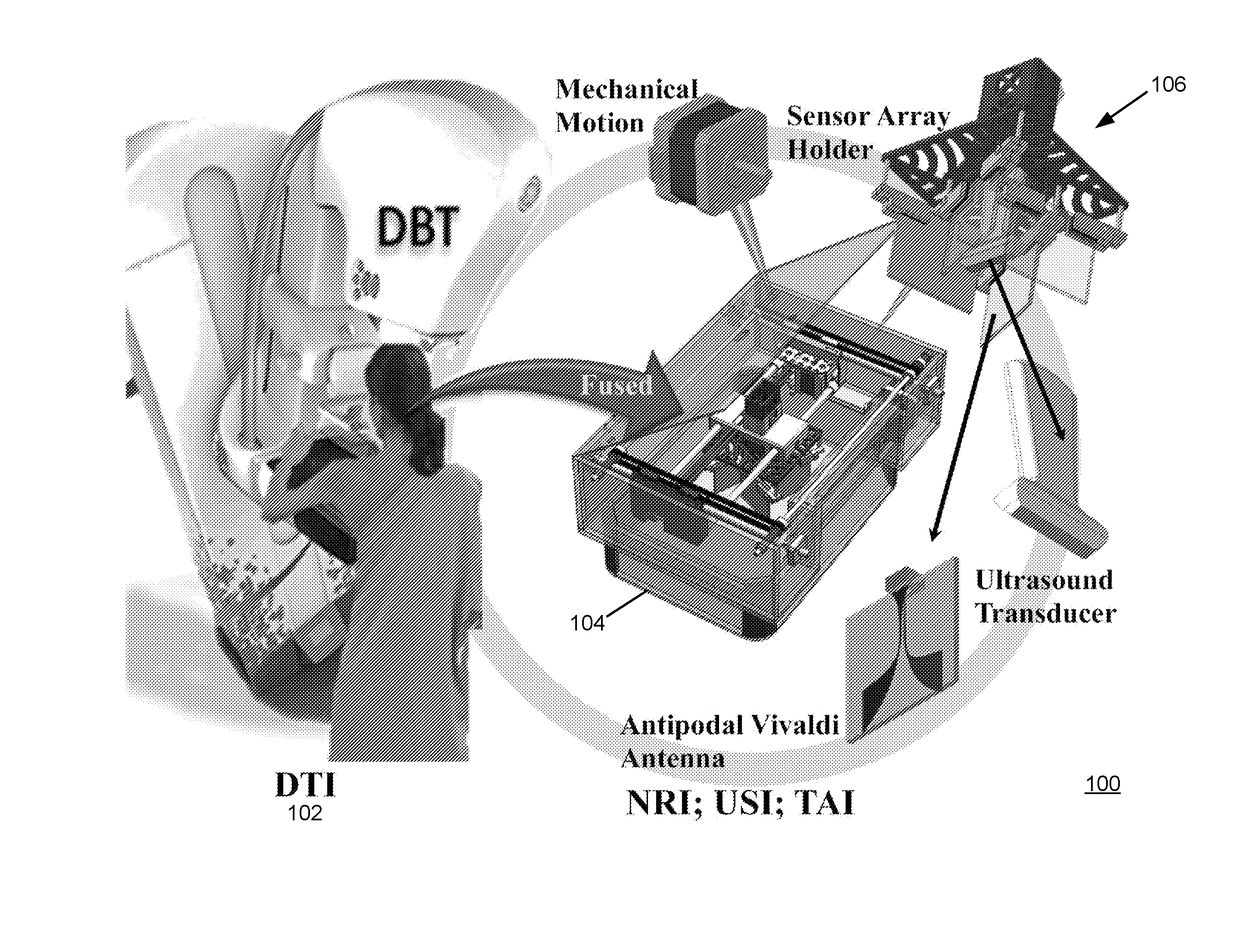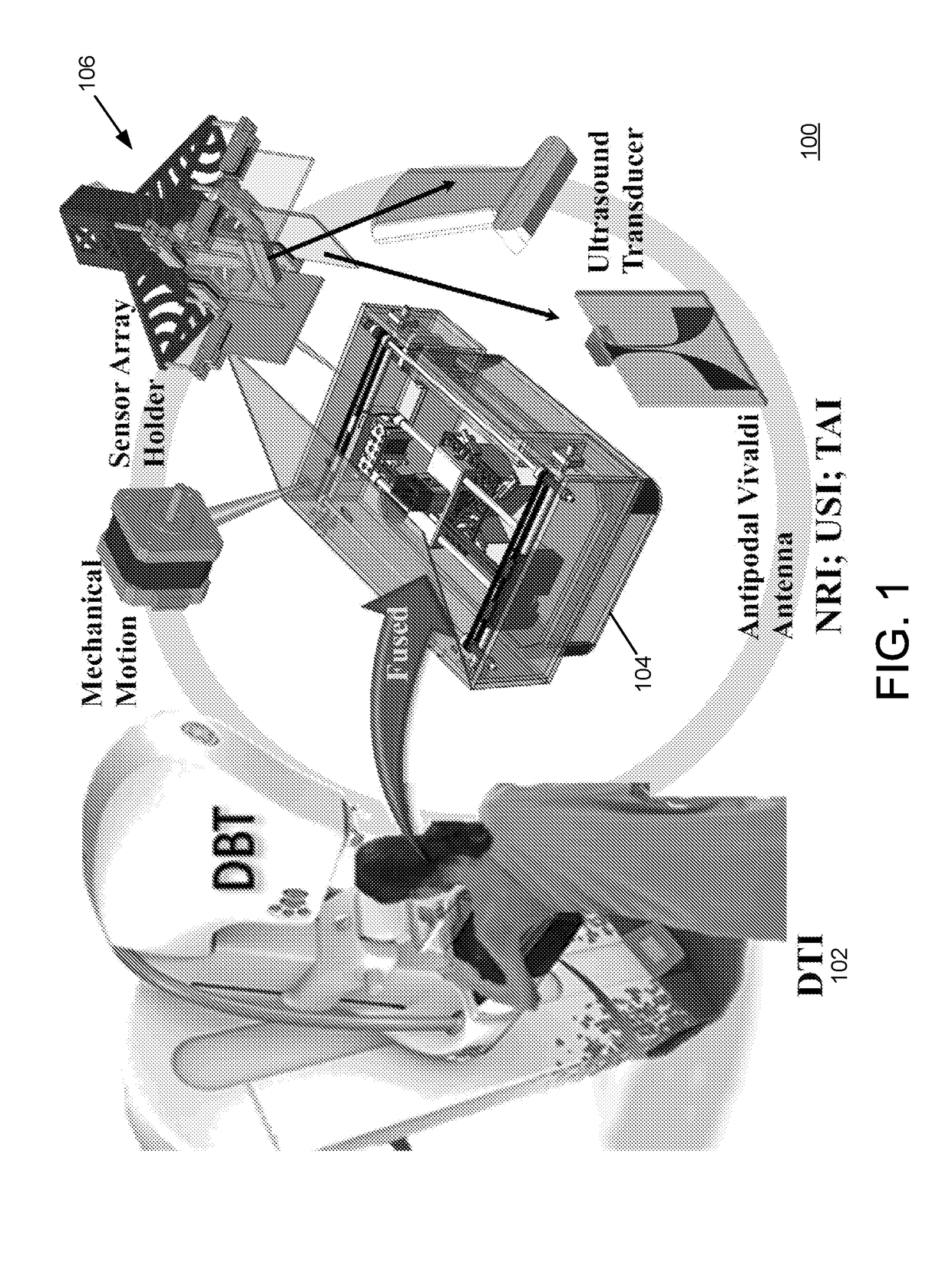Non-Invasive Breast Cancer Detection Using Co-Registered Multimodal Probes: Microwave Nearfield Radar Imaging (NRI), Digital Breast Tomosynthesis (DBT), Ultrasound Imaging (US) And Thermoacoustic Imaging (TA)
a multi-modal, breast cancer technology, applied in the field of non-invasive breast cancer detection using co-registered multi-modal probes, can solve the problems of increasing the risk of breast cancer, increasing the difficulty of detecting breast cancer, and different chances of detecting early breast cancer, so as to achieve high fibrous-to-cancerous contrast, high resolution, and high sensitivity and specificity.
- Summary
- Abstract
- Description
- Claims
- Application Information
AI Technical Summary
Benefits of technology
Problems solved by technology
Method used
Image
Examples
Embodiment Construction
[0056]A description of example embodiments of the invention follows.
[0057]The teachings of all patents, published applications and references cited herein are incorporated by reference in their entirety.
[0058]The described embodiments are directed to a breast cancer detection system that uses a multimodal imaging configuration. The described embodiments may utilize a fusion of two or more imaging modes, including for example (i) Digital Breast Tomosynthesis (DBT), (ii) Microwave Nearfield Radar Imaging (NRI), (iii) Ultrasound Imaging (USI) and Thermoacoustic Imaging (TAI). The described embodiments may evaluate the captured multimodal scan data jointly rather than independently. The described embodiments may further utilize co-registration of the two or more imaging modes, which ensures that the scans of all modes are captured with respect to the same physical configuration of the breast under study, i.e., while the breast is under clinical compression. The co-registration avoids th...
PUM
 Login to view more
Login to view more Abstract
Description
Claims
Application Information
 Login to view more
Login to view more - R&D Engineer
- R&D Manager
- IP Professional
- Industry Leading Data Capabilities
- Powerful AI technology
- Patent DNA Extraction
Browse by: Latest US Patents, China's latest patents, Technical Efficacy Thesaurus, Application Domain, Technology Topic.
© 2024 PatSnap. All rights reserved.Legal|Privacy policy|Modern Slavery Act Transparency Statement|Sitemap



